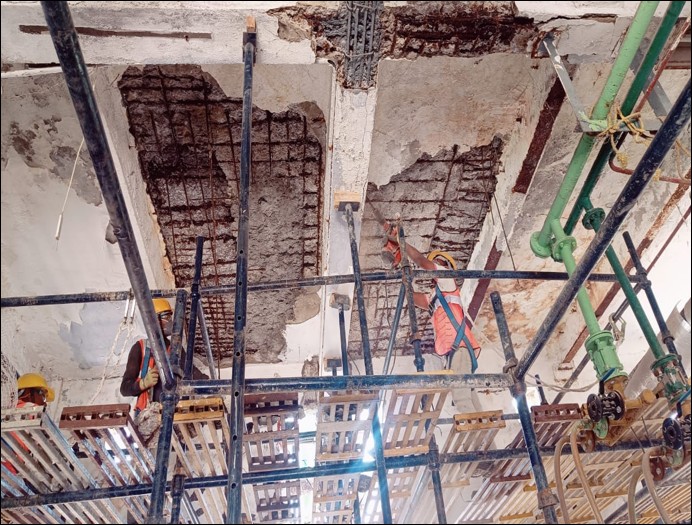
How Corrosion of Reinforcement Weakens Concrete Structures – and How to Stop It
Reinforced concrete (RCC) is the backbone of modern infrastructure — from bridges and buildings to tunnels and dams. Its strength lies in the synergy between concrete and embedded steel reinforcement. But when that steel begins to corrode, the entire system is compromised. Corrosion is one of the most insidious and widespread causes of RCC deterioration, silently weakening structures and shortening their service life.
Understanding how corrosion occurs, how to detect it early, and how to prevent or mitigate its effects is essential for engineers, asset managers, and facility owners. With the right strategies, corrosion can be slowed — or even stopped — ensuring that concrete structures remain safe, durable, and cost-effective for decades
Major Triggers of Corrosion:
- Chloride Ingress: From marine environments or de-icing salts.
- Carbonation: Atmospheric CO₂ reducing the alkalinity of concrete.
- Moisture Penetration: Due to poor waterproofing or construction defects.
Detection Techniques:
- Half-Cell Potential Tests: Identifies areas prone to corrosion.
- Linear Polarization Resistance (LPR): Measures corrosion rate.
- Electrochemical Impedance Spectroscopy: Advanced monitoring of rebar conditions.
Protection & Mitigation:
- Use of epoxy-coated, galvanized, or stainless steel rebars in aggressive environments.
- Cathodic Protection Systems: Applying a small electrical current to prevent rusting.
- Surface Treatments: Silane sealers, waterproof membranes, and corrosion inhibitors.
- Re-alkalization & Chloride Extraction: Electrochemical repair methods restoring durability.
Corrosion of reinforcement is a silent threat — but it’s not unstoppable. With early detection, smart materials, and proactive maintenance, engineers can preserve RCC structures for decades. Whether it’s a bridge, a water tank, or a high-rise tower, the key is to act before corrosion compromises safety and performance. In today’s infrastructure landscape, corrosion control is not just a technical necessity — it’s a strategic imperative.
In today’s infrastructure landscape, where aging assets outnumber new builds, preventive maintenance has become a cornerstone of sustainable asset management. It’s not just about fixing what’s broken — it’s about preserving performance, ensuring safety, and maximizing return on investment.
Why Maintenance Matters More Than Ever
Concrete deterioration is often slow and silent. Cracks, corrosion, and delamination may go unnoticed until they compromise structural integrity. The consequences of deferred maintenance include:
- Accelerated reinforcement corrosion, leading to spalling and loss of load-bearing capacity.
- Water ingress, which weakens concrete and promotes microbial growth.
- Increased liability for owners due to non-compliance with safety codes.
- Higher repair costs, often 5–10 times more than early intervention.
In contrast, timely maintenance can:
- Extend service life by 20–50 years.
- Reduce lifecycle costs by up to 40%.
- Improve safety and user confidence.
- Enhance asset value and performance.
Preventive maintenance strategies today go far beyond traditional inspections. With advanced tools, engineers can now detect and repair damage before it becomes critical:
- Non-Destructive Testing (NDT): Identifies voids, cracks, and reinforcement corrosion without breaking concrete.
- Infrared Thermography: Detects hidden moisture, delamination, and insulation failures.
- Structural Health Monitoring (SHM): Uses embedded sensors to provide real-time data.
Once issues are diagnosed, targeted interventions such as polymer-modified repair mortars, micro-silica overlays, and corrosion inhibitors can restore durability. Preventive maintenance is not just about extending life—it’s also about ensuring compliance with evolving safety codes and reducing liability for owners.
Case studies show that with systematic upkeep, RCC structures can last 20–50 years beyond their design life, turning what could have been costly replacements into cost-effective extensions of service life. For property owners and infrastructure managers, maintenance isn’t an expense—it’s an investment in safety, sustainability, and financial efficiency.


